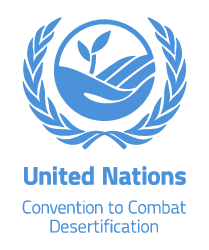Location
The United Nations Convention to Combat Desertification in Those Countries Experiencing Serious Drought and/or Desertification, Particularly in Africa (UNCCD) is a Convention to combat desertification and mitigate the effects of drought through national action programs that incorporate long-term strategies supported by international cooperation and partnership arrangements.
Members:
Resources
Displaying 66 - 70 of 586Heading towards an unsustainable world: some of the implications of not achieving the SDGs
The Sustainable Development Goals (SDGs) were conceived at the United Nations Conference on Sustainable Development, held in Rio de Janeiro in 2012 (Rio + 20), and adopted by the United Nations General Assembly in September 2015. They are part of a larger framework, namely the UN 2030 Agenda for Sustainable Development. Since then, many countries round the world have been engaging in respect of their implementation. The slow progress seen in the implementation of the SDGs, is in contrast with the many negative implications of not implementing them.
Restoration of agricultural landscapes and dry forests in Senegal. Included in Restoring African Drylands
In the above initiatives, self-motivated populations increased food security and reduced vulnerabilities to climatic shocks by restoring and sustainably managing local forest resources. To regenerate agroforestry parklands, farmers built on traditional systems to increase on-farm tree density and convert degraded lands to densely wooded savannas. These actions increased crop yields and produced new sources of livestock browse. The population of Sambandé restored the local forest and managed it to sustainably produce fuel and fruit.
Protecting 30% of the planet for nature: costs, benefits and economic implications.
You cannot put a price tag on nature — but the economic numbers point to its protection,” said Anthony Waldron, the lead author of the report and researcher focused on conservation finance, global species loss and sustainable agriculture.
Salinization in Drylands
Most commonly in drylands the salinity levels are always high and evenly dispersed due to this salinity levels the plant cultivated are usually tremendously affected. Normal plants cannot grow in soils with high salinity levels. In this book the authors would like to analyze the effects of human acticities on the salinity lebvels in drylands.
Mainstreaming youth in IFAD operations: A practitioner’s guide
The failure of rural economies to deliver decent work to their young people affects national economies, threatens political stability, nurtures extremism and causes socially and economically disruptive migration. Globally, youth are two to three times more likely than adults to be unemployed.


